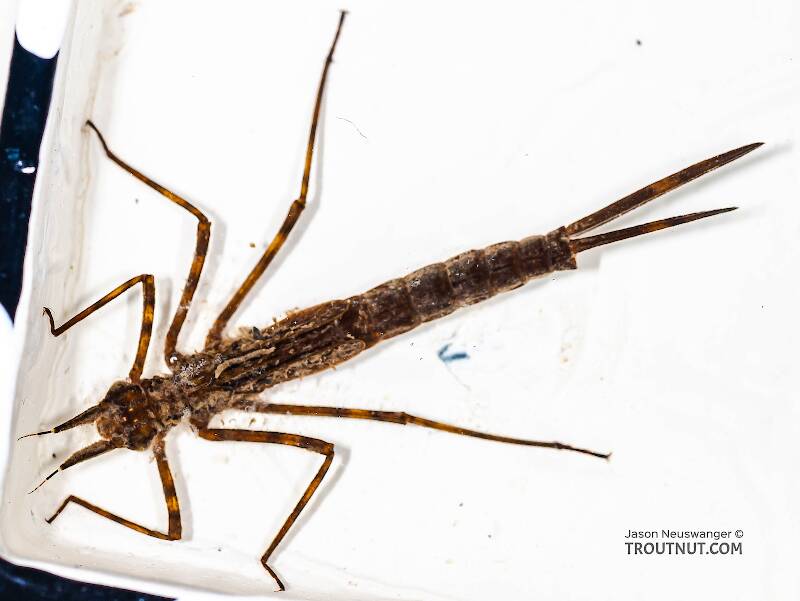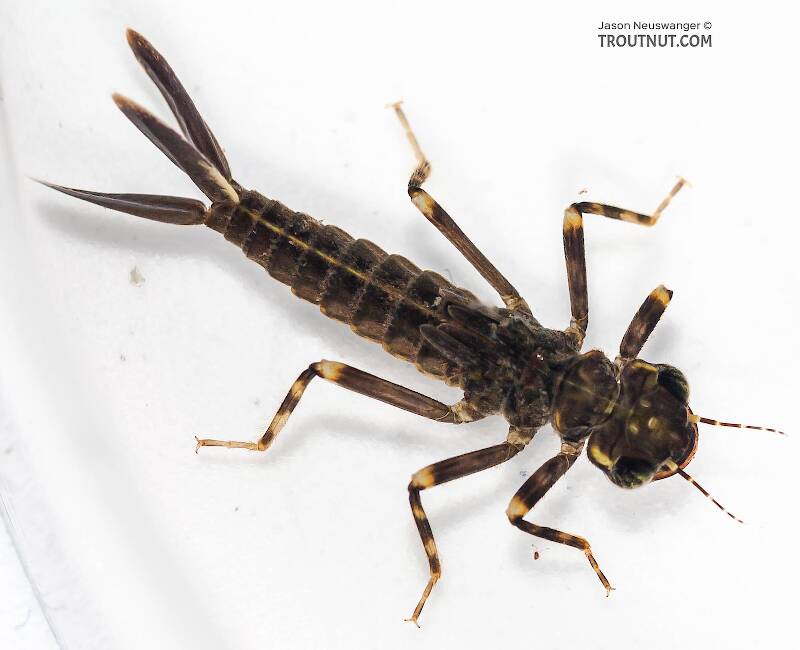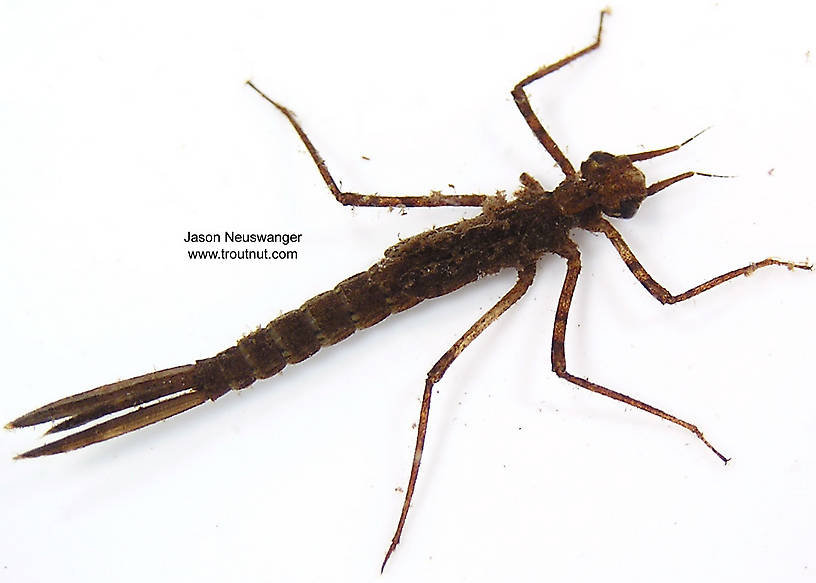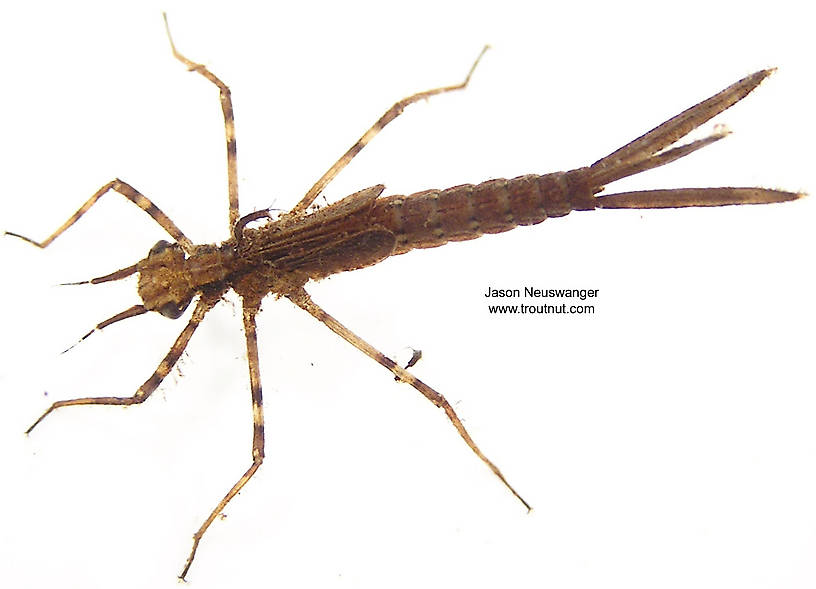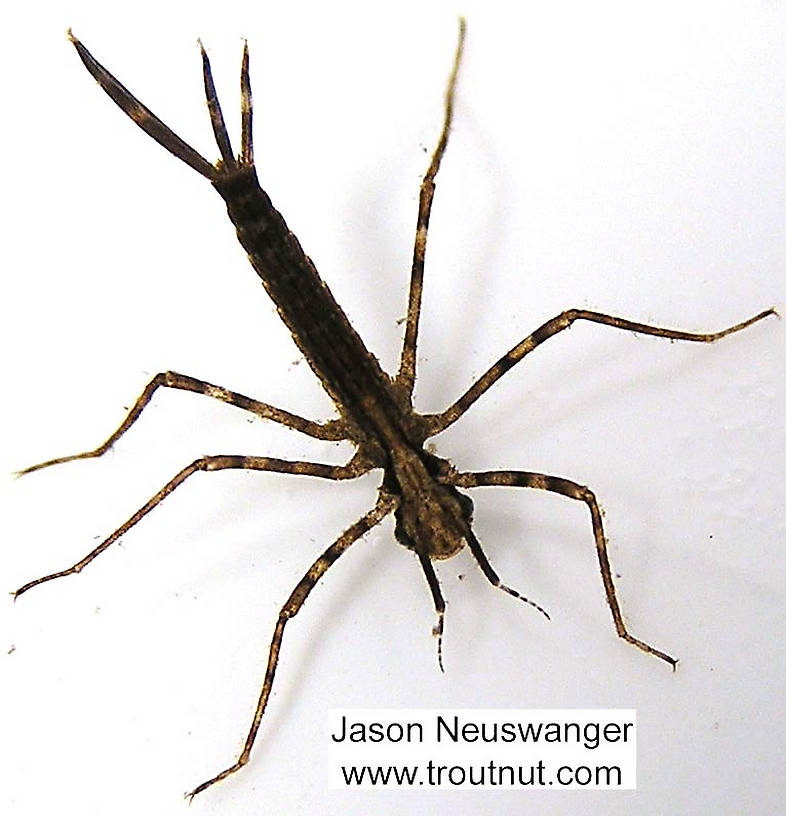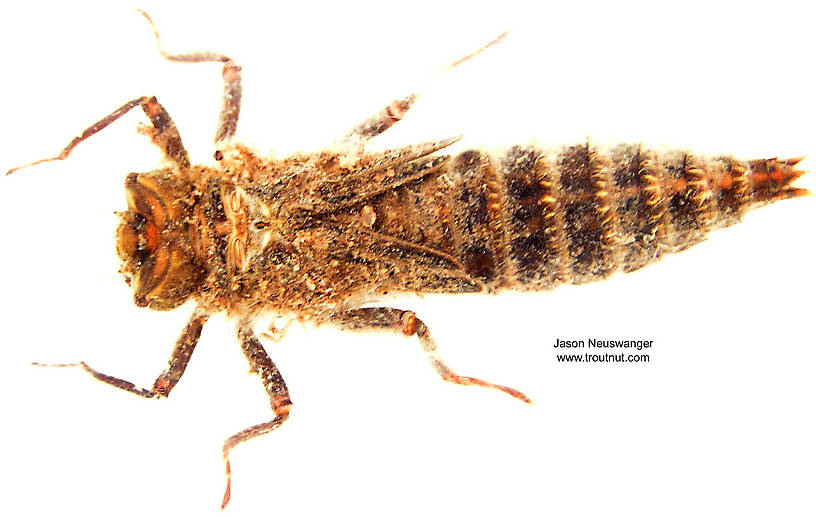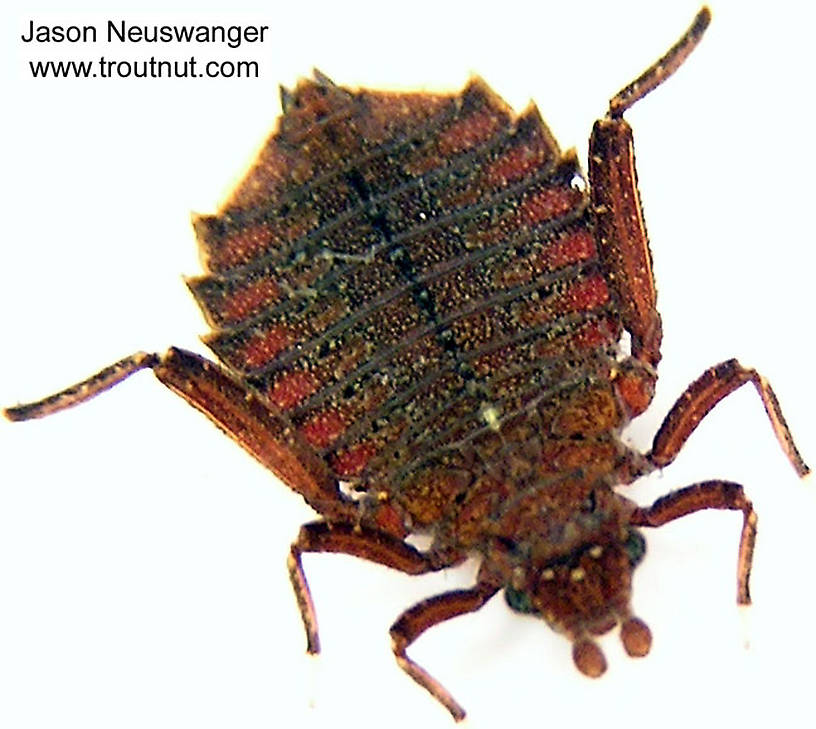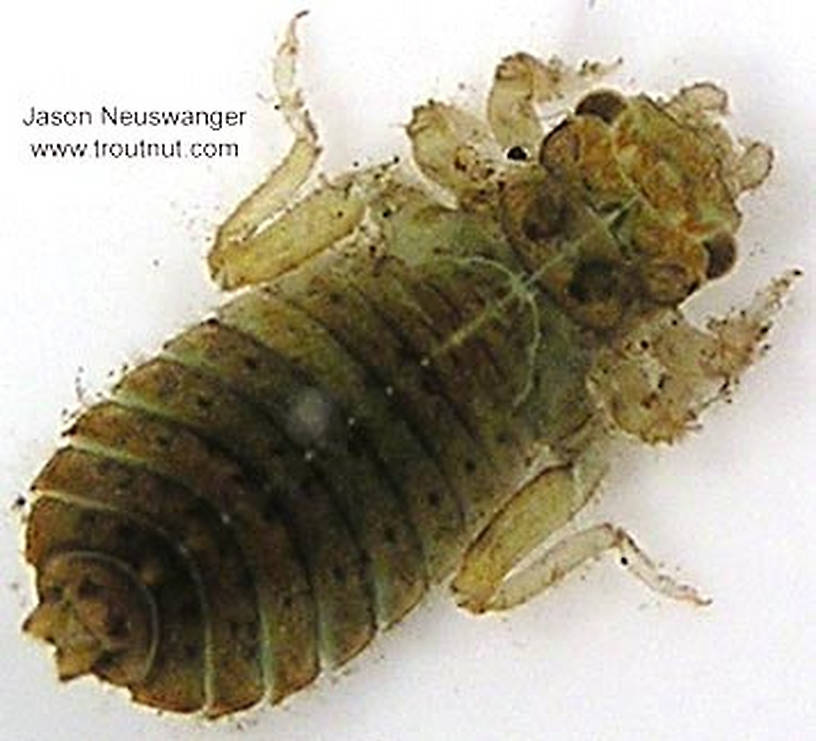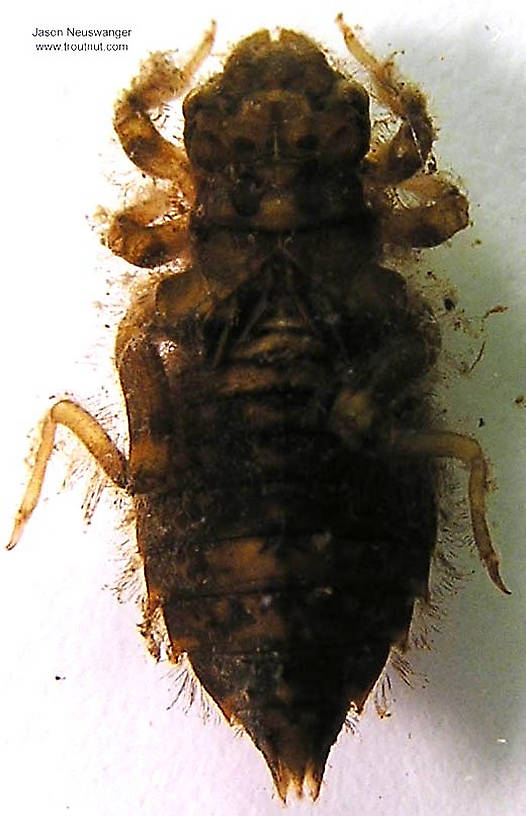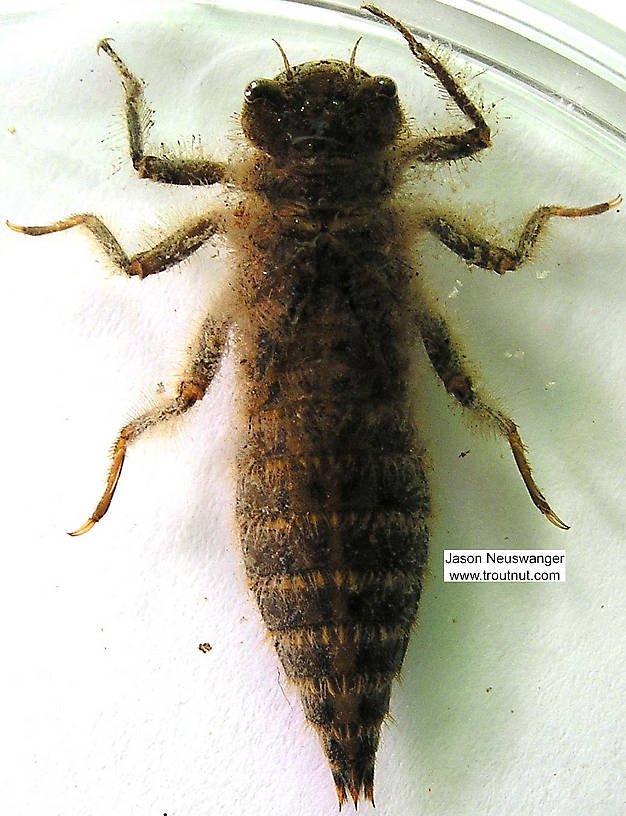
Blue-winged Olives
Baetis
Tiny Baetis mayflies are perhaps the most commonly encountered and imitated by anglers on all American trout streams due to their great abundance, widespread distribution, and trout-friendly emergence habits.
Featured on the forum

This specimen appears to be of the same species as this one collected in the same spot two months earlier. The identification of both is tentative. This one suffered some physical damage before being photographed, too, so the colors aren't totally natural. I was mostly photographing it to test out some new camera setting idea, which worked really well for a couple of closeups.

Troutnut is a project started in 2003 by salmonid ecologist Jason "Troutnut" Neuswanger to help anglers and
fly tyers unabashedly embrace the entomological side of the sport. Learn more about Troutnut or
support the project for an enhanced experience here.
Identification: Key to Orders of Aquatic Insect Nymphs, Couplet 5
Identification: Key to Orders of Aquatic Insect Nymphs, Couplet 5
Error: Tried to access a key that isn't live.
Adapted from Merritt R.W., Cummins, K.W., and Berg, M.B. (2019)
| Option 1 | Option 2 |
|---|---|
| Body slender, with head wider than thorax and abdomen | Body stout, with head usually narrower than thorax and abdomen |
| 3 long, caudal tracheal gills at the tip of the abdomen resemble paddle-like tails | 5 short, stiff, pointed appendages at the tip of the abdomen |
5 Example Specimens | 5 Example Specimens |
| Odonata-Zygoptera | Odonata-Anisoptera |
Adapted from Merritt R.W., Cummins, K.W., and Berg, M.B. (2019)
The current couplet is highlighted with darker colors and a icon, and couplets leading to this point have a icon.
Leads to Orthoptera:
- Hind legs suitable for jumping, with hind femora greatly enlarged
- Abdomen with short tails
- Found in moist places and only temporarily in water
Leads to Couplet 3:
- Hind legs suited for crawling, with hind femora similar in size to front and middle femora, not greatly enlarged
- Abdomen with or without conspicuous tails
- Usually submerged and truly aquatic
Couplet 3
Leads to Couplet 5:
- Labium (lower lip) mask-like, extendable into a scoop-like structure longer than head
Couplet 5
Leads to Couplet 4:
- Labium normal, smaller than head, not large and mask-like
Couplet 4
Leads to Ephemeroptera:
- Tarsi almost always with one claw
- Usually 3 tails, but sometimes 2
- Plate-like, filamentous, or feathery gills located on sides of abdomen, often present on most middle abdominal segments
Leads to Plecoptera:
- Tarsi with 2 claws
- Always 2 tails
- Finger-like or feathery gills present, but sometimes inconspicuous at base of mouthparts, head, legs, first few abdominal segments, or last abdominal segment
Couplet 5 (You are here)
Leads to Odonata-Zygoptera:
- Body slender, with head wider than thorax and abdomen
- 3 long, caudal tracheal gills at the tip of the abdomen resemble paddle-like tails
Leads to Odonata-Anisoptera:
- Body stout, with head usually narrower than thorax and abdomen
- 5 short, stiff, pointed appendages at the tip of the abdomen
Start a Discussion of this Couplet
References
- Merritt R.W., Cummins, K.W., and Berg, M.B. 2019. An Introduction to the Aquatic Insects of North America (Fifth Edition). Kendall/Hunt Publishing Company.
Orders excluded
These orders of Insecta are not included in this key: Trichoptera, Diptera, Coleoptera, Megaloptera, Lepidoptera, Hymenoptera, Neuroptera, Psocodea


